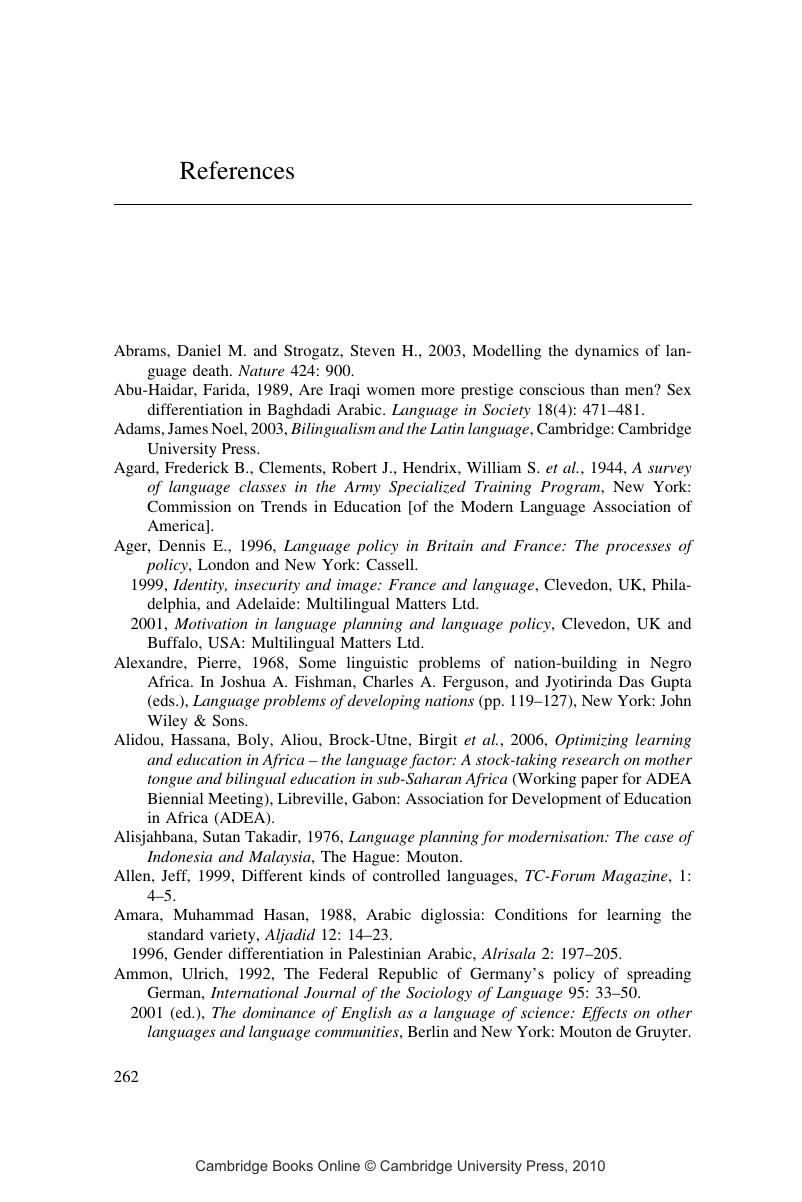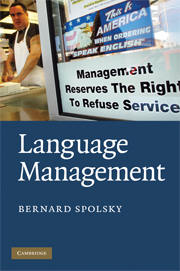Book contents
- Frontmatter
- Contents
- Acknowledgements
- 1 Towards a theory of language management
- 2 Managing language in the family
- 3 Religious language policy
- 4 Language management in the workplace: managing business language
- 5 Managing public linguistic space
- 6 Language policy in schools
- 7 Managing language in legal and health institutions
- 8 Managing military language
- 9 Local, regional, and national governments managing languages
- 10 Influencing language management: language activist groups
- 11 Managing languages at the supranational level
- 12 Language managers, language management agencies and academies, and their work
- 13 A theory of language management: postscript or prolegomena
- References
- Index
- References
References
Published online by Cambridge University Press: 05 June 2012
- Frontmatter
- Contents
- Acknowledgements
- 1 Towards a theory of language management
- 2 Managing language in the family
- 3 Religious language policy
- 4 Language management in the workplace: managing business language
- 5 Managing public linguistic space
- 6 Language policy in schools
- 7 Managing language in legal and health institutions
- 8 Managing military language
- 9 Local, regional, and national governments managing languages
- 10 Influencing language management: language activist groups
- 11 Managing languages at the supranational level
- 12 Language managers, language management agencies and academies, and their work
- 13 A theory of language management: postscript or prolegomena
- References
- Index
- References
Summary

- Type
- Chapter
- Information
- Language Management , pp. 262 - 290Publisher: Cambridge University PressPrint publication year: 2009



